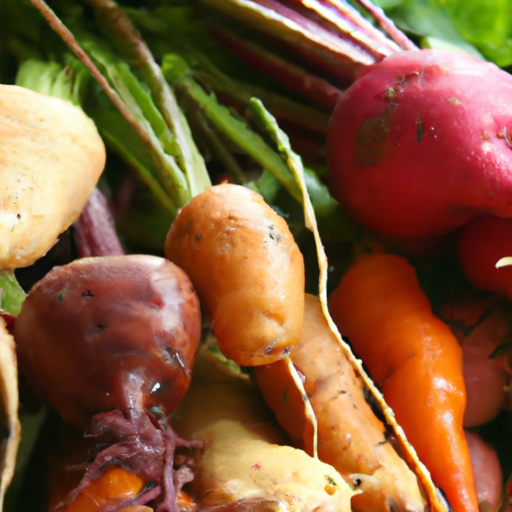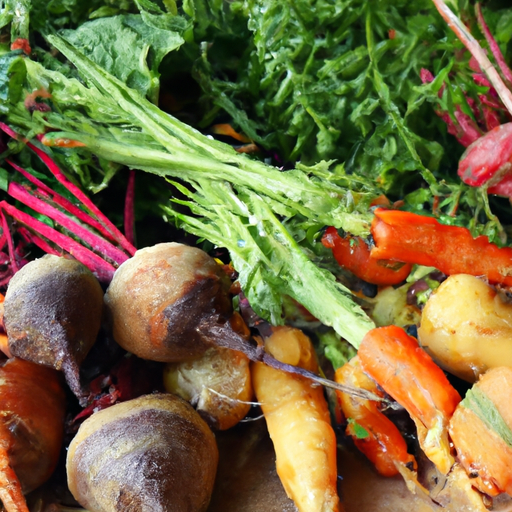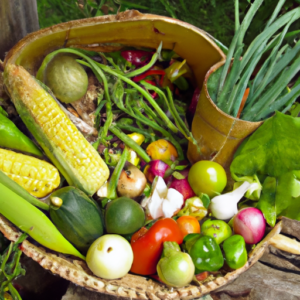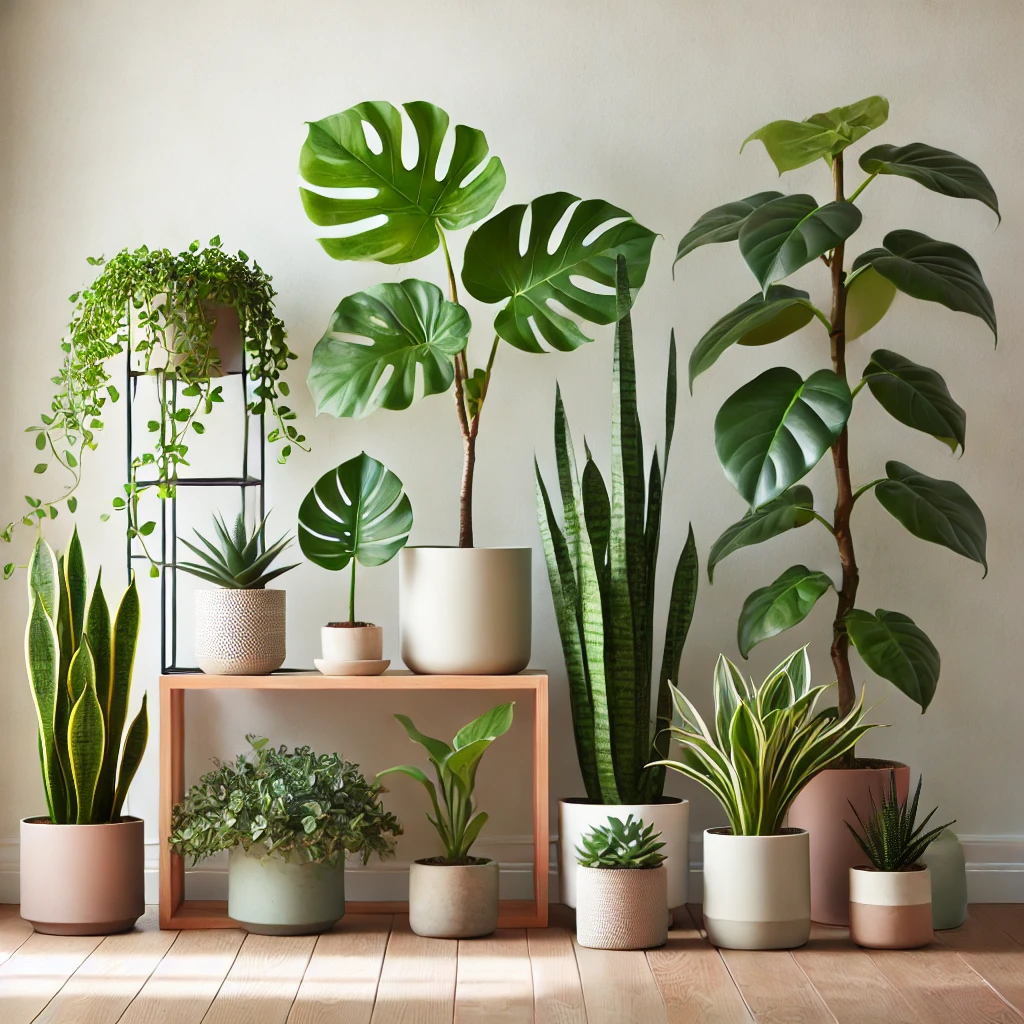You’re in for a treat! Get ready to discover the wonderful world of root vegetables. From carrots to potatoes and everything in between, these nutrient-rich wonders are not only delicious but also packed with a variety of flavors and textures. In this article, we’ll explore the different types of root vegetables and dive into the amazing benefits they bring to your plate. Get ready to dig deep into the world of root vegetables and unlock a whole new realm of culinary delights.
Types of Root Vegetables
Root vegetables are a diverse and nutritious group of vegetables that grow underground. They are not only delicious but also packed with essential vitamins, minerals, and antioxidants that benefit your overall health. In this article, we will explore some of the most popular root vegetables, including carrots, potatoes, turnips, beets, onions, radishes, parsnips, sweet potatoes, garlic, and ginger. Each of these root vegetables has its own unique characteristics and benefits, so let’s dive in and learn more about them!
Carrots
Carrots are one of the most well-known root vegetables, loved for their vibrant orange color and sweet flavor. These crunchy and delicious vegetables are packed with beta-carotene, which is converted into vitamin A in your body. Vitamin A is essential for healthy vision, a strong immune system, and vibrant skin. Carrots come in various shapes and sizes, including the traditional orange carrots, as well as purple, yellow, and white varieties.
When it comes to cooking carrots, they can be enjoyed in a variety of ways. They can be eaten raw as a crunchy snack or grated into salads. Carrots can be roasted, steamed, or boiled, making them a versatile ingredient in many popular dishes. They also pair well with a variety of spices and herbs, adding depth to soups, stews, and stir-fries.
Apart from their delicious taste, carrots offer several health benefits. They are rich in fiber, which aids digestion and promotes a healthy gut. Additionally, carrots are low in calories and high in antioxidants, making them a great addition to any weight-loss diet.
To store carrots, remove the leafy tops and store them in a plastic bag or container in the refrigerator. This will help keep them fresh for up to a few weeks. Before using carrots, make sure to wash them thoroughly and peel off the skin if desired.
Potatoes
Potatoes are a staple in many cuisines around the world and are incredibly versatile. These starchy root vegetables are available in a wide array of varieties, each with its own unique flavor, texture, and cooking properties. From the classic russet potato to the buttery Yukon gold and the vibrant purple Peruvian potato, there is a potato for every taste preference.
When it comes to cooking potatoes, the possibilities are endless. They can be boiled, mashed, roasted, or fried, offering a range of textures and flavors. Potatoes can be used in a variety of dishes, from comforting mashed potatoes to crispy french fries and hearty potato soups. They also make a great base for casseroles and gratins, adding substance and creaminess.
In addition to their culinary versatility, potatoes also offer several health benefits. They are an excellent source of carbohydrates, which provide energy and fuel for your body. Potatoes are also high in vitamin C, potassium, and fiber. However, it’s important to note that the cooking method used can significantly impact the nutritional value of potatoes. Boiling or baking potatoes with the skin intact helps retain more nutrients compared to deep-frying.
To store potatoes, keep them in a cool, dark place, such as a pantry or cellar. Avoid storing them in the refrigerator, as the cold temperature can convert the potato’s starches into sugar and affect their taste and texture. Before preparing potatoes, give them a good scrub to remove any dirt or debris.
Turnips
Turnips are often overlooked in favor of other root vegetables, but they deserve a place on your plate. These small, bulbous vegetables have a slightly sharp and peppery flavor that becomes milder when cooked. Turnips come in various colors, including white, yellow, and purple, each with its own distinct taste and texture.
When it comes to cooking turnips, they can be enjoyed in several ways. They can be boiled, steamed, roasted, or sautéed, adding a unique flavor to dishes. Turnips can be mashed or pureed to create a velvety side dish or added to soups and stews for added depth. They also work well when paired with herbs and spices, such as thyme and rosemary.
In terms of health benefits, turnips are low in calories and high in fiber, making them a fantastic option for weight management. They are also a good source of vitamin C, potassium, and calcium. Additionally, turnips contain glucosinolates, which have been shown to have anti-cancer properties and may help protect against certain types of cancer.
To store turnips, remove the leafy greens and store them separately from the roots. The greens can be used in salads or sautéed as a nutritious side dish. Place the roots in a perforated plastic bag and store them in the refrigerator to keep them fresh for up to several weeks. Before cooking, scrub the turnips to remove any dirt or debris.
Beets
Beets are known for their vibrant color and earthy flavor. These root vegetables come in various shades, including deep red, golden, and striped varieties. Beets can be cooked and enjoyed in both sweet and savory dishes, offering versatility in the kitchen.
When it comes to cooking beets, they can be roasted, boiled, steamed, or even grated raw into salads. Roasting beets brings out their natural sweetness and intensifies their flavor, making them a delicious side dish. They can also be pickled to create tangy and colorful additions to sandwiches or salads. Additionally, beet greens, the leafy tops of beets, can be sautéed or added to soups for a nutrient-packed boost.
In terms of health benefits, beets are a rich source of antioxidants and essential nutrients. They contain a compound called betalain, which gives them their vibrant color and has been shown to have anti-inflammatory and antioxidant properties. Beets are also low in calories, high in fiber, and packed with vitamins and minerals like folate, manganese, and potassium.
To store beets, remove the leafy greens and store them separately, refrigerating both the roots and greens. The greens can be used within a few days, while the roots can last for several weeks when stored in a sealed plastic bag in the refrigerator. Before using beets, wash them thoroughly to remove any dirt and trim off the ends.
Onions
Onions are a staple ingredient in many cuisines around the world, loved for their pungent flavor and culinary versatility. These bulbous vegetables come in different colors and varieties, each with its own distinct taste and texture. From the sharp red onion to the milder yellow onion and the sweet Vidalia onion, there is an onion for every dish.
When it comes to cooking with onions, they are incredibly versatile and can be used in a wide variety of dishes. They can be sliced or diced and added to stir-fries, soups, stews, and sauces, adding depth and flavor. Onions can also be caramelized to bring out their natural sweetness, enhancing the taste of dishes like French onion soup or onion tart. Additionally, raw onions can be used in salads, salsas, and sandwiches for a crisp and zesty kick.
In addition to their culinary uses, onions offer several health benefits. They contain antioxidants and sulfur compounds that have been shown to have anti-inflammatory and anti-cancer properties. Onions are also a good source of vitamin C, fiber, and potassium. They have been linked to improved heart health, lowered blood sugar levels, and better digestion.
To store onions, keep them in a cool, dry place with good air circulation, such as a pantry or cabinet. Avoid storing them near potatoes, as they can release moisture and cause the onions to spoil faster. Whole onions can last for several weeks, while chopped or sliced onions should be stored in a sealed container in the refrigerator and used within a few days.
Radishes
Radishes are often enjoyed for their crisp texture and peppery flavor. These small root vegetables come in various shapes, sizes, and colors, ranging from the classic red radishes to the mild white radishes and the vibrant watermelon radishes. Radishes are commonly used as a garnish, adding a pop of color and a spicy kick to salads, tacos, and sandwiches.
When it comes to cooking with radishes, they can be enjoyed in a variety of ways. They can be eaten raw, sliced, or grated into salads for a refreshing crunch. Radishes can also be pickled to create tangy and colorful additions to dishes. Additionally, radish greens, the leafy tops of radishes, can be used in salads, stir-fries, or sautéed as a nutritious side dish.
In terms of health benefits, radishes are low in calories and high in fiber, making them a great option for weight management. They are also a good source of vitamins C and K, as well as antioxidants like anthocyanins. Radishes contain compounds that support healthy digestion, boost immunity, and promote detoxification.
To store radishes, remove the greens and store them separately from the roots. The greens can be used within a few days, while the roots can be stored in a perforated plastic bag in the refrigerator for up to a week. Before using radishes, wash them thoroughly and trim off the tops and ends.

Parsnips
Parsnips are similar in appearance to carrots but have a distinct flavor of their own. These cream-colored root vegetables have a sweet and nutty taste, making them a wonderful addition to various dishes. Parsnips can be enjoyed both cooked and raw, offering versatility in the kitchen.
When it comes to cooking parsnips, they can be roasted, boiled, mashed, or even transformed into fries. Roasting parsnips brings out their natural sweetness and caramelizes their flesh, making them tender and delicious. They can be mashed just like potatoes or pureed into soups and sauces, adding a rich and velvety texture. Parsnips can also be grated or thinly sliced and eaten raw in salads or as a crunchy snack.
In terms of health benefits, parsnips are a rich source of fiber, antioxidants, and essential nutrients. They are particularly high in vitamin C, potassium, and folate. Parsnips also contain polyacetylenes, which have been shown to have anti-inflammatory and anti-cancer properties. Additionally, they are a great source of energy and can help support healthy digestion.
To store parsnips, remove the leafy tops and store them in a plastic bag in the refrigerator. They can be kept fresh for up to a few weeks. Before using parsnips, wash them thoroughly to remove any dirt or debris, and peel off the skin if desired.
Sweet Potatoes
Sweet potatoes are a popular root vegetable known for their sweet flavor and vibrant orange color. These versatile vegetables can be enjoyed in both savory and sweet dishes, making them a popular choice in many cuisines around the world. Sweet potatoes come in various shapes and sizes, from the classic orange-fleshed sweet potato to the purple and white varieties.
When it comes to cooking sweet potatoes, they can be baked, roasted, boiled, steamed, or even microwaved. Baking sweet potatoes brings out their natural sweetness and creates a rich and creamy texture. Roasting sweet potatoes makes them crispy on the outside and tender on the inside, perfect for fries or wedges. Sweet potatoes can also be mashed, pureed, or added to soups and stews for added depth and flavor.
In addition to their delicious taste, sweet potatoes offer several health benefits. They are a great source of complex carbohydrates, fiber, and essential vitamins like vitamin A and C. Sweet potatoes are also rich in antioxidants, which help protect your body against damaging free radicals. They have been linked to improved digestion, reduced inflammation, and enhanced brain function.
To store sweet potatoes, keep them in a cool, dark place with good ventilation, such as a pantry or cellar. Avoid storing them in the refrigerator, as the cold temperature can alter their taste and texture. Before using sweet potatoes, give them a good scrub to remove any dirt and debris, and enjoy them with or without the skin.

Garlic
Garlic is a pungent and flavorful root vegetable that is widely used as a seasoning in various cuisines. It belongs to the allium family, which also includes onions, shallots, and leeks. Garlic is known for its strong and distinct taste, which adds depth and flavor to a wide range of dishes.
When it comes to cooking with garlic, it can be used in both raw and cooked forms. Raw garlic has a strong and spicy taste and is often used in dressings, sauces, and marinades. Cooked garlic becomes milder and sweeter, infusing its flavor into soups, stews, stir-fries, and roasted dishes. Garlic can be minced, sliced, or crushed, depending on the desired intensity of flavor.
In addition to its culinary uses, garlic is also known for its potential health benefits. It contains a compound called allicin, which has been shown to have antimicrobial and immune-boosting properties. Garlic is also a good source of manganese, vitamin C, and vitamin B6. It has been associated with reduced blood pressure, improved cholesterol levels, and enhanced immune function.
To store whole garlic bulbs, keep them in a cool, dry place with good air circulation, such as a pantry. Avoid storing garlic in the refrigerator, as it can cause the cloves to become soft and develop a rubbery texture. Once a bulb is broken, use the individual cloves within a few days to maintain their freshness and flavor.


